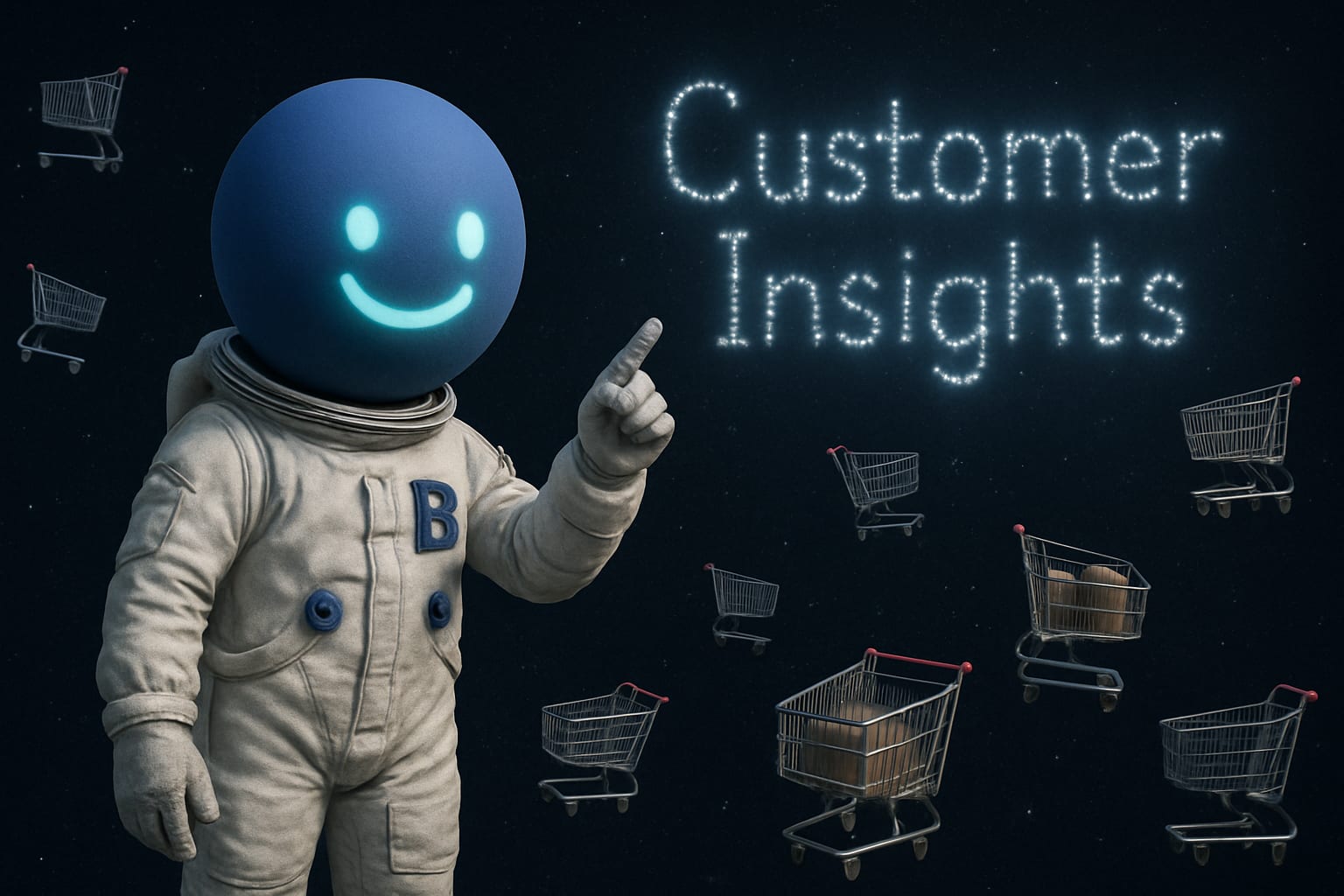Intro to Marketing Attribution
We take a Blurbsian lense to marketing attribution fundamentals.

There’s a marketing urban legend that’s been passed around about an alleged fistfight betwen head of search and the head of catalog at LL Bean. The brawl was over attribution. A customer gets a catalog, gets intrigued, then later types "LL Bean" into the search bar and makes a purchase from that search. Both budget owners literally fight to get credit for the conversion. These fisticuffs sparked the development and adoption of Media Mix Modeling (MMM), a method to fairly and more accurately assign sales credit across channels without the fracas.
Marketing attribution is essentially the quest to answer a deceptively simple question: which marketing efforts actually drive sales and conversions? It tracks the many ways customers engage with ads, emails, websites, and offline media before they pull the trigger. For marketers managing budgets across channels like search, social, CTV, direct mail, and billboards, attribution is the tool that promises clarity in the chaos.
Traditionally, we’ve relied on cookie and pixel-based tracking and models like last-click attribution, which gives 100% credit to the last interaction before purchase. That’s easy but deeply flawed — it ignores the contributions of awareness and mid-funnel channels. Companies like Measured and Data Speaks are going way beyond these simplistic models. Their platforms combine incrementality testing — where you run real-world experiments to measure the actual lift your campaigns deliver — with media mix modeling, which statistically analyzes historical aggregated data across all channels. This hybrid, called triangulated measurement, is gaining serious traction because it overcomes correlation-versus-causation pitfalls inherent in older methods.
Take Haus for example, whose geo-based incrementality experiments precisely measure true campaign impact without relying on cookies or pixel tracking. They automate experimental setups and offer daily reports that give marketers X-ray vision into what’s working. Similarly, incrmntal helps marketers find the true causal impact of campaigns using privacy-centric, user-data-free methodologies. These advances are critical as third-party data fades under increasing privacy regulations like GDPR and CCPA.
Meanwhile, marketing attribution models come in many flavors, each with pros and cons. Last-click and first-click attribution are simple but oversimplify complex customer journeys. Linear, time-decay, position-based, and W-shaped models try to spread credit more fairly but still lean on correlation, not causation. Data-driven or algorithmic attribution uses machine learning for weighted credit assignment but requires lots of data and remains vulnerable to attribution bias. Platforms like Hyros and Northbeam offer sophisticated multi-touch attribution that integrates first-party data to try to get closer to the truth, but they are still limited in privacy-first environments.
This is where media mix modeling shines. MMM looks at aggregated marketing spend and sales data over time to infer each channel's contribution. While traditional MMM suffered from being static and untimely, companies such as Prescient, Keen, and Liftlab provide daily updated and AI-augmented solutions that add agility and precision to MMM. TripleWhale uses AI-powered agents to continually analyze media mix and customer journeys, delivering real-time data-driven recommendations tailored for ecommerce marketers.
Another powerful technique is incrementality testing, which directly measures how many extra conversions a campaign drives beyond what would have happened anyway. This involves controlled experiments like A/B tests or geo holdouts. Here, companies such as Measured, Rockerbox, and ReCast provide platforms that run large-scale experiments, deliver statistically sound incrementality measurement, and integrate these insights back into MMM for model calibration.
Integration plays a critical role in attribution success. Data Speaks supports over 300 ad platform connections, including Google, Meta, TikTok, and retail channels like Amazon and Walmart, bridging siloed data into unified analytics. Similarly, Attain leverages live purchase data from a direct consumer panel, ensuring attribution reflects real buying behavior, not modeled guesses. Their solutions are especially notable for linking offline sales lift to digital campaigns.
For marketers trying to unify online and offline performance, attribution must encompass channels like Connected TV and out-of-home advertising. Firms like Samba TV and TV Scientific excel in CTV measurement, while Reveal Mobile and Paramark offer location-based and offline attribution solutions for billboard and retail visits. These help marketers fully understand the media mix’s role in driving foot traffic and in-store sales.
Comprehensive, privacy-safe attribution also requires attention to data quality and cross-channel consistency. Converge centralizes data, using server-side tracking to avoid duplication and ensure aligned insights across campaigns. Adjust, and AppsFlyer specialize in mobile attribution with fraud prevention and deep linking, ensuring mobile-first campaigns are measured and optimized confidently.
Visualizing and acting on attribution data is another key piece. Tools like Adriel, Heap, and TripleWhale provide dashboards and AI-driven insights that help marketers turn complex data into immediate budget and creative decisions. Bonsai and Lifesight focus on integrating first-party data and making incrementality modeling accessible and actionable in real time.
Ad verification and media quality matter to attribution too. DoubleVerify and Adelaide Metrics assess viewability and media quality, reducing wasted spend on low-value inventory. Tracksuit tracks brand sentiment to align attribution with brand health metrics, ensuring balanced marketing decisions.
Audio and podcast advertising, growing niches, have specialized attribution needs. Magellan and Veritonic excel in measuring audio ad effectiveness, leveraging pixel tracking and AI to optimize ad placements and creative impact.
Offline attribution is increasingly integrated, with vendors like Brij transforming physical engagements into trackable customer journeys, and NCSolutions using in-store purchase behavior to adjust digital campaigns mid-flight for faster ROI realization.
Some companies bridge multiple arenas. Kochava offers mobile and omnichannel attribution, deep linking, fraud prevention, and incrementality testing combined, allowing companies to track and optimize holistically across devices, from mobile apps to OTT and programmatic channels.
In summary, modern marketing attribution is moving past simplistic last-click models toward a triangulated approach combining media mix modeling, incrementality testing, and platform-level data integration. This shift is powered by AI, massive data integrations, and experimental rigor — tools offered by front-runners like Data Speaks, Measured, and Haus. The aim is reliable, privacy-safe, and actionable measurement spanning digital and offline channels, empowering marketers to confidently allocate their budgets and maximize returns.
For someone inheriting a complex $500k marketing budget spanning digital and traditional media, the advice is simple: pick a platform that offers incrementality-tested MMM calibrated in near real-time, integrates widely with your media sources, and provides clear, unbiased reporting dashboards. Platforms like those by Prescient, Rockerbox, and Keen make iterative planning and forecasting easier. At the same time, invest early in incrementality experiments via tools from incrmntal or Haus to validate your assumptions.
Ultimately, the landscape is evolving rapidly amid privacy changes and marketing complexity. Staying nimble and grounding decisions in causal measurement rather than mere correlation will future-proof your marketing investments and produce the results your budget deserves.
Key Concepts in Marketing Attribution
- Marketing attribution assigns credit to marketing touchpoints along a customer’s path to purchase.
- Traditional models (last-click, first-click, linear) often misallocate credit because they rely on correlation, not causation.
- Incrementality testing uses controlled experiments to measure the true causal lift from marketing activities.
- Media Mix Modeling analyzes aggregated data statistically to uncover long-term channel contributions.
- Triangulated measurement combines incrementality, MMM, and platform data for a holistic, actionable view.
- Privacy regulations and tech shifts require new methods like first-party tracking and privacy-safe analytics.
Leading Practices for Smart Attribution
- Run geo or holdout incrementality tests to validate model assumptions and optimize spend confidently.
- Leverage AI-augmented media mix models with daily or weekly updates for agility and precision.
- Integrate first-party data from your own systems and major platforms for trustworthy measurement.
- Use unified dashboards for real-time insights, simplifying complex multi-channel campaign management.
- Combine online data with offline channels like CTV and out-of-home to get a full picture of marketing impact.
- Be aware of attribution limitations; attribution “models” can differ — focus on causal measurement wherever possible.
Top Tools and Vendors to Explore
- Data Speaks: AI-driven incrementality and MMM with extensive ad platform integrations.
- Haus: Automated geo incrementality tests and causal attribution without cookies.
- Measured: Enterprise platform focused on incrementality, media mix modeling, and spend optimization.
- incrmntal: Privacy-centric continuous incrementality measurement without user-level data.
- Prescient: Daily-refreshing MMM with top-of-funnel campaign emphasis and omnichannel coverage.
- Rockerbox: Combines multi-touch attribution, MMM, and incrementality testing in one platform.
- Attain: Live purchase data for precise audience insights, closely tied to real consumer behavior.
- Northbeam: Real-time MTA plus MMM with first-party data focus across channels.
- Keen: AI-powered marketing mix modeling enabling real-time budget scenario planning.
- TripleWhale: AI analytics and attribution tailored for ecommerce marketers with unified insights.




